
Why Cabo Verde?
If you crave instant sunshine, a trip to Cabo Verde might be a good idea for you. The archipelago of ten islands lies in the Atlantic Ocean, north of the equator and west of Senegal in West Africa. You might consider visiting the islands as an extended stopover between continents, by plane, yacht, or cruise ship.
Nine out of ten islands are inhabited, and each of them has their own unique ability to enchant the nomad visiting them. It takes a while to learn all their names and what you can do there, which is why we put so many maps in this guide to help you navigate where you want to go, and where you want to go next. The yellow star is Cabo Verde’s capital city Praia. Note that the uninhabited island of Santa Luzia – as well as several islets – aren’t open to visitors.

Cabo Verde became independent from Portugal in 1975. Since then, the country has been quite safe and stable, and developed quickly despite the geographical challenges and lack of natural resources. It’s one of the few countries in the world that managed to grow from a least developed country to a developing nation. Staying in the islands for an extended period of times supports that development.
Besides sunshine, the country offers many nice things on the cultural and natural front. The Cabo Verdeans speak a creole language based on Portuguese, locally known as Kriola. The people produce a lot of music and have a host of different genres for different moods. Check out some Spotify playlists and Google Cesária Évora if you want to know what to expect or get excited about going to Cabo Verde. Music and dance culminate in the yearly Carnival in February/March, with a month worth of preparations leading up to the event.
If you’re into physical activities and appreciating natural beauty, Cabo Verde will not disappoint you. The kitesurfing beaches are mostly in Sal, Boavista, and São Vicente. Every island has great day or even multi-day hikes, guided or solo. Santo Antão’s green Paul Valley is famous for this, as well as the volcanic hike to Pico do Fogo on Fogo Island, the highest point of the archipelago (2829 m above sea level).
And then there’s the question of WiFi… If you absolutely need a great and fast internet connection, you might reconsider a trip to Cabo Verde. The country’s one redeeming factor is that their mobile network coverage is not just adequate; it’s impressive – and it’s growing. Even in the seemingly remotest areas, it’s possible to do work from. So worry no more! We put together this entire guide to help you both get your work done and enjoy the good life in Cabo Verde. We did it, and so can you.
Money
The currency in Cabo Verde is the Cape Verdean escudo. People usually use the $ symbol, which can be confusing when you’re associating that with the US-dollar. A meal price indicated as $800 is quite normal. It might also be written as 800$00, using the symbol as a decimal separator or as 800 Esc. The currency code is CVE.
The euro is used as a second currency. Prices for touristy things are often indicated in euro. On the island Sal, you can pay everywhere in euro or even with a wild mix of euro and escudos. You will also often receive euro as change, even if you paid in escudos. On the other islands, euros are usually only accepted at touristy places and you will receive escudos as change.
The escudo is pegged to the euro at a fixed rate of 1 EUR = 110 CVE. If you pay in euro, the less favorable exchange rate of 1 EUR = 100 CVE will be used, so you pay 10% more for the questionable comfort of paying in euro. The same exchange rate will be used when you get change in euro.
Note that the dot is used as a thousand separator in Cabo Verde. A price indicated as $10.000 means $10000. Since the value of the escudo is so low, you’ll not see prices with centavos indicated. Many people round prices to the next 5 escudos.
Banks with ATMs accepting VISA and MasterCard are widely available in all bigger villages and towns. Ask for banco if you can’t find one. Some ATMs only have a VISA sign, but MasterCard is accepted as well. Maestro cards or other credit cards are usually not accepted. To be on the safe side, bring multiple credit cards. All ATMs are run by the same company, so the withdrawal limits and fees are the same everywhere. You can withdraw the equivalent of €182 (20000 Esc) and you’ll pay a fee of €1.82 (200 Esc).

Exchanging money is easy in the touristy areas on Sal. As usual, don’t exchange your money at the airport if you can avoid it, because the exchange rates are better in the towns. Banks also offer money exchange.
Credit card payments are possible at fancy places, but a 3% fee is often been charged. So if you have a good credit card, you are better off just getting money out of the ATM and paying everything in cash.
Tipping is not expected in Cabo Verde, but if you want to feel a token of gratitude, it will be understood and appreciated.
Cabo Verde is relatively cheap, but touristy tours can quickly add up. Some pricing examples:
Half liter bottle of Coke in a shop – €0.60
Cappuccino – €1.50
Cheap restaurant meal – €3.00
Small beer in a bar – €1.00
Liter of wine in a shop – from €3.00
Hotel room – from €20.00
Airbnb apartment – from €28.00
5 km by minibus (aluguer) – €1.00
5 km by taxi – €5.00
Rent a car for a day – €50
So, how expensive is it to live in Cabo Verde for a week? Let’s say you’re on a budget. You stay in a cheap hotel and cook for yourself or eat at cheap local places. You have two beers per week and use the minibusses (aluguers) a few times per week. That sums up to a weekly budget of about €175 per week, approximately €760 per month.
If money isn’t that tight, you might opt for your own apartment, go to a restaurant every day and have a proper night out or day trip twice per week. You explore the islands by taxi since you can’t be bothered to wait for an aluguer. That comes to about €415 per week or €1800 per month.
That’s about the range you can expect. The biggest factors are your choice of accommodation and the number of touristy things you are doing.
Internet
There’s good news and there’s bad news. Bad news first: Many places claim that they offer WiFi, but it’s generally considered an optional thing that might or might not work and is often limited to 1-2 GB. Good news: Mobile internet coverage is great and even the smallest villages are covered with 3G. So if you have any plans of getting work done, you should get a SIM card.
We recommend the biggest provider CVMovel since they have the best coverage. A small package with 1 GB will cost you €4.50 and a big 5 GB package is €11.40. Buying a SIM is relatively straightforward at one of the CVMovel shops and recharge can be done at pretty much every business. All you have to do is quote your number and say how much you want to recharge. To check your balance, use the USSD-code *#123#. Just call it like a number. To book an internet package, use the code *#180# and choose the options 2, 6, 1, 1 in this order. This will give you the menu to select a package. For a more detailed explanation, check out the article getting a SIM Card in Cabo Verde on Mind of a Hitchhiker.
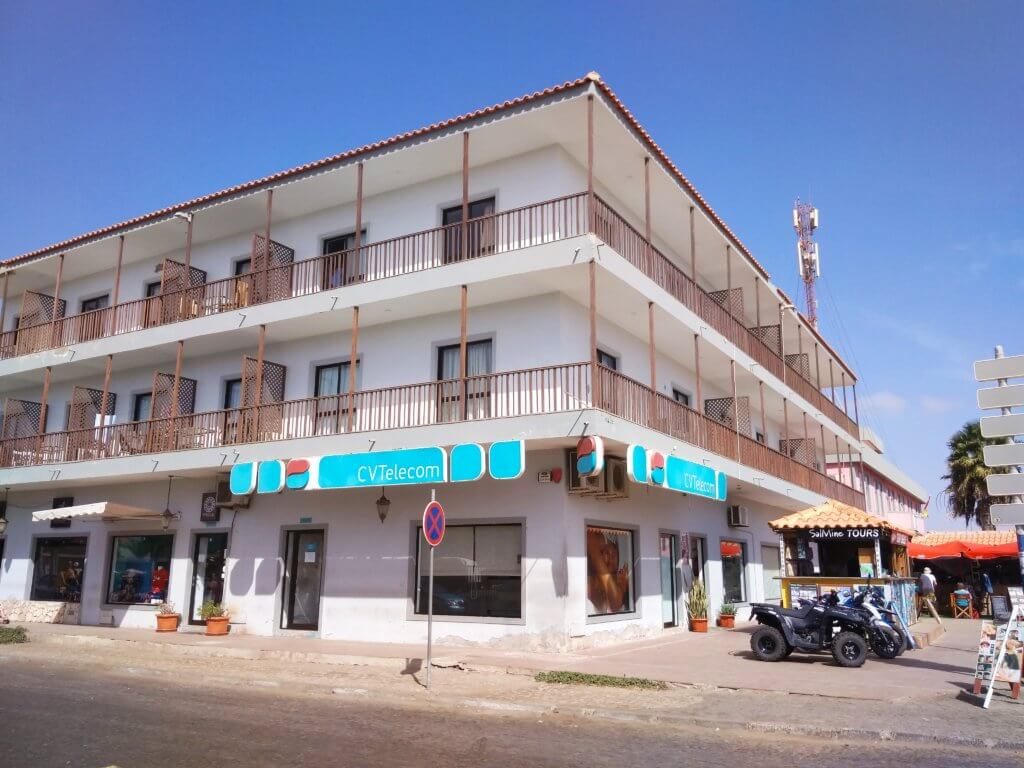
CVMovel is not the biggest fan of personal hotspots and will block this option on iOS. So make sure to bring a non-Apple device if you plan to work since the option to block the hotspot function is only technically possible on iOS.
While the price for data is okay, you don’t want your computer to suck out your data volume with cloud syncing or other non-critical activities. We recommend installing the app TripMode (available for Mac and Windows), where you can control exactly which app can use your data. And if you really have to watch Netflix on your mobile data, make sure to set the video quality to low, which will only use about 300 MB per hour and still looks fine.
Accommodation
Many locals are hopping on the opportunity of renting a room or entire apartments to visitors, often at lower prices than the old school hotels. Airbnb is growing fast, but Booking.com is also popular. Our advice is to check both platforms before making a decision. Most locals are proud of their island and are happy to give you tips and help you to organize trips. Accept these offers, since it can be a bit difficult or organize things without help.
However, this doesn’t mean that hotels or guest houses are generally a worse deal. Especially in smaller owner-run hotels, you will experience the same hospitality. There are also quite some guest houses renting out apartments.
If you rent an apartment, you often have a washing machine for your laundry. Hotels usually offer laundry services and will wash, dry and fold your clothes for about €8 for a full load.
Watch out: sometimes, Airbnb ‘collapses’ the accommodations of one island under another, due to the relative proximity of accommodations. If you’re looking for a place to stay in Brava, sometimes it will show you places in Fogo, or vice versa. Airbnb doesn’t know that getting to that listing would require you to take another boat or flight, so use the map view and double check what you booked!
Food
It’s probably no surprise that fish is big in a country like Cabo Verde. Most common are tuna (atum) and sawfish (serra). Both are usually grilled together with generous amounts of butter and garlic and just taste amazing. Fries are commonly served as a side, which you can often replace with vegetables for a healthier meal.
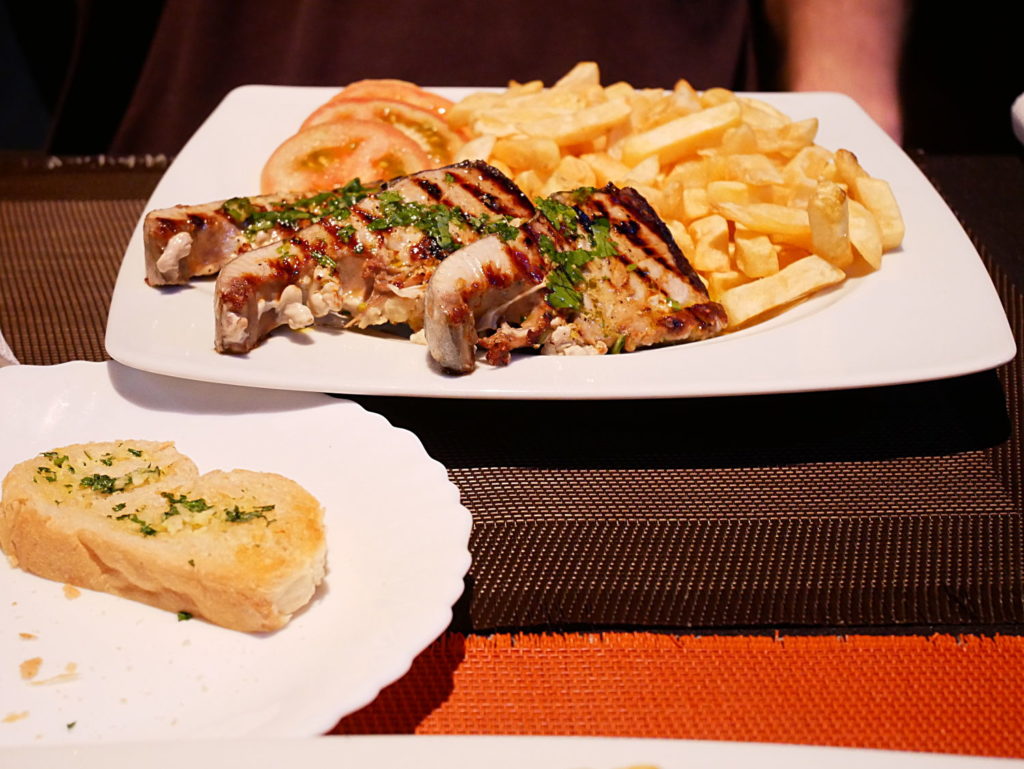
If fish is not your thing, the standard alternative is usually grilled chicken with the same sides, which is also very juicy and tasty.
If you go to a local restaurant, these are often your only two choices. While they are both very good, you might crave some more variety if you stay for a longer time.
While not considered a proper dish, many local restaurants are also serving burgers and you can choose if you want it on bread (hambúrguer no pão) or on a plate (hambúrguer no prato), together with a fried egg and fries.
A typical local dish is Cachupa, which is a stew, made of corn, beans, cassava, sweet potato and often fish and/or meat. There is also a fried version of this, called Cachupa refogada.
Eating vegetarian or vegan can be a challenge in Cabo Verde, but the fancier restaurants serve vegetarian dishes.
The food supplies in shops vary depending on the island, but there is generally way less choice than in most European or American countries. There are no big supermarkets, just mini markets. Especially the offer and quality of fresh products is heavily based on what’s available and can change daily. There is no bottle deposit system.
Plastic bags are provided at all shops free of charge, resulting in many of them ending up all over the islands. It’s good to bring your own bag and politely decline the plastic bags. People and the planet will appreciate that.
Transport
Entering Cabo Verde
Cabo Verde has direct flight connections to Europe, Africa, South America (Brazil), North America (USA), and also direct flights to other Atlantic archipelagos, like the Canary Island (Spain), the Azores (Portugal), and even Iceland. Cruise ships also visit the archipelago, mainly the port of Mindelo (Porto Grande) on São Vicente island. Cabo Verde is also the last port of call for sailing yachts crossing the Atlantic Ocean in November/December every year.
The 4 international airports are: Sal – Amílcar Cabral International Airport (SID), Santiago (Praia) – Nelson Mandela International Airport (RAI), Boa Vista – Aristides Pereira International Airport (BVC), and São Vicente – Cesária Évora International Airport (VXE).
When flying in, the airline might ask you about your return flight during the analog check-in. To be safe, book a return ticket within a 90-day period – more on that in the visa section. Most passport holders will receive a 30-day stay in Cabo Verde when entering. We advise you to look up Cabo Verde’s visa policy towards your nationality before booking anything.
The nationalities that can enter ‘visa-free’ – but not free of charge – have to register online for an EASE, which costs €31. If you want a more detailed account of how we did it, you can read more about our experiences applying for the EASE.
Ferry Connections
The ferries in Cabo Verde are cheaper than the flights, but not for the faint-hearted. In winter especially, the seas can be rough, which leads to many passengers being seasick on the longer routes. Moreover, booking ferry tickets can be a troubling process. Some of the issues we’ve encountered: irregular office opening times, system down, unhelpful employee, and closed because it’s always Carnaval.
Two islands in the Cabo Verde archipelago are only reachable by ferry: Santo Antão and Brava. The route between São Vicente and Santo Antão is competitively priced at €7.40 for a one-way ticket with either Fast Ferry (Cabo Verdean) or Naviera Armas (Spanish). Fast Ferry takes 30 minutes to do the crossing and Naviera Armas takes 55 minutes. On the Naviera Armas, you can sit on the deck in the sunshine or shadow.
Fast Ferry has a fleet of three boats, of which two fast catamaran boats that cover all the other routes. Their catamarans are Kriola and Liberdadi. At any time, one of the three boats might be under maintenance. Always check at your local Fast Ferry office whether your route is available. During our stay, one larger single-hulled boat Praia d’Aguada seemed to be out of order. This ship seems to operate irregular and overnight long-distance routes from its home base Santiago to every other island in the archipelago.
The website implies that you can book a Fast Ferry ticket online, but as of March 2019, it doesn’t work. Every major town has a Fast Ferry booking office, where you can ask the person at the desk to book you a ticket. You’ll need to bring some form of identification with you, and they’ll demand a phone number to call you on in case the boat is canceled (which never happened to us). This is where your local Cabo Verdean phone number comes in handy. If you can’t find the official booking office or it seems to be perpetually closed, try to buy a ticket at travel agencies or bigger hotels. They often can sell you a ticket for the same price.
Another Cabo Verdean company named Polar also does ferry routes. They have two ships: Inter-Ilhas and Sotavento. Sotavento operates a route between Santiago and Maio (2.5 hours), and Inter-Ilhas does Santo Antão – São Vicente (1 hour) and sometimes São Vicente – São Nicolau (4 hours). Needless to say, they forgot to put the passenger prices on the website and their online booking system doesn’t work. It’s better to go to one of their offices when they’re open.

Plane Connections
Cabo Verde has 7 working airports, of which 4 operate international flights as well. All islands are (somewhat) reachable by boat, but if you want to book everything online: book a flight.
At the moment, Binter CV, a Canarian Spanish company, currently runs all the domestic flight routes in Cabo Verde. They have taken over this task from the national airline TACV (Cabo Verde Airlines). They have a fleet of three of the same aircraft with space for 72 passengers with a 2 – 2 seating arrangement. You are allowed to bring one small bag with all the important stuff on board, but everything else will be checked in at no extra charge. Their online booking system is working well and our flights were always on time. Flights never last longer than one hour. You’ll receive a cup of water and a cookie on board.
Their prices are fixed for the routes for the tariffs economica and flexivel. The latter is a bit more expensive but allows you to change the name or the date of your ticket. As of March 2019, the following are the prices for economy tickets. Light green means a direct flight, and orange means with a stopover, which is always in Praia, Santiago (RAI). The ‘taxes and service fee’ that gets added before you buy your flight is always 1950 CVE. If you only have the option to book a flexible ticket, you should add between 600 and 900 CVE to the final price from this overview:
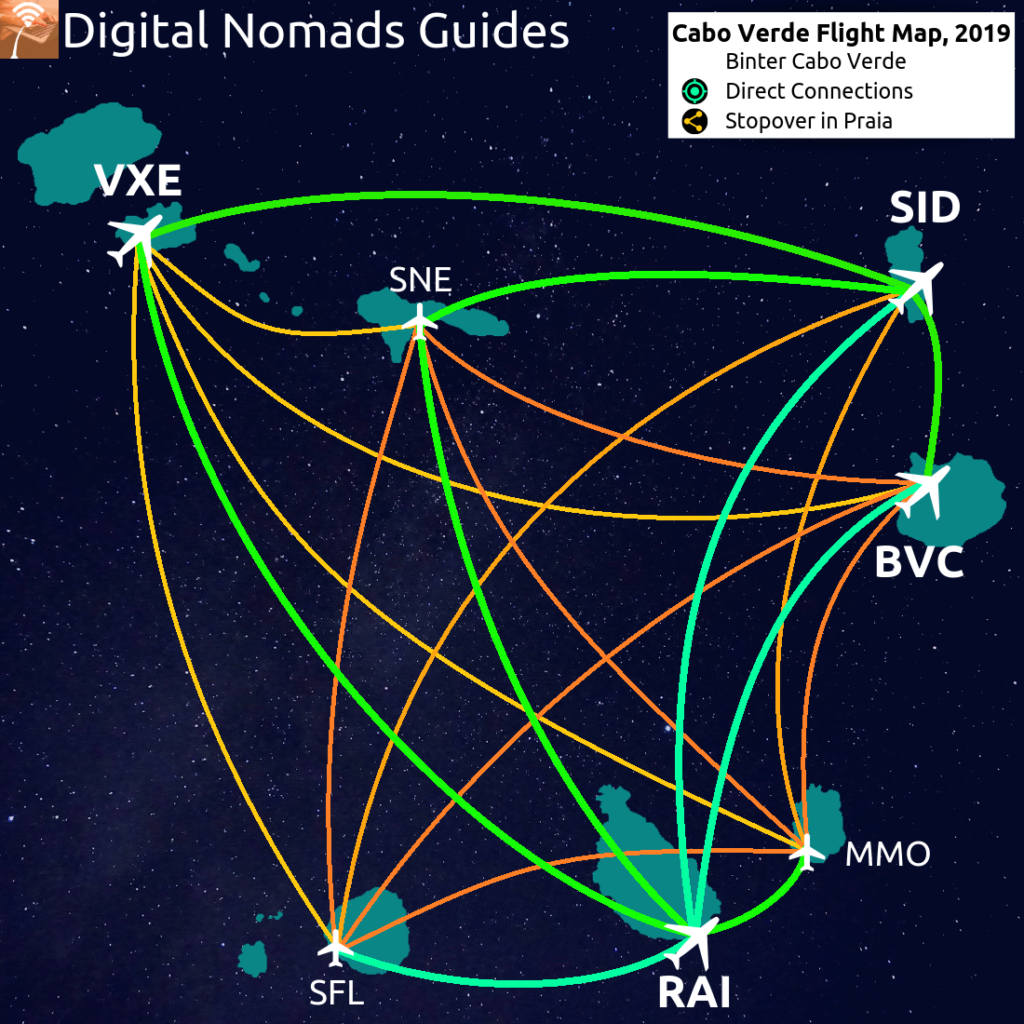

On The Islands
Local transport on the islands is mostly done by so-called Aluguer. These are either minibusses or pickups with benches in the back. They run between most settlements on the islands. You can just wave them down anywhere on the street. If you tell the driver where you are going, he might even do a little detour for you. Be aware that many routes are only serviced until noon or 2 pm. After that, you have to take a taxi or hitchhike. For more detailed information about the local transport check out this detailed article on mindofahitchhiker.com.
Business Hours
Business hours in Cabo Verde are short and can be quite a source of frustration. Life mostly happens in the morning hours and your chances of catching an aluguer decline rapidly towards the afternoon. Some shops do a break during noon and reopen for a few hours in the afternoon. In the evening, most mini markets close between 5.30pm and 6.30pm, so make sure to have all the food and drinking water you need before that. Local restaurants, on the other hand, will often not serve dinner before 7 pm. Some businesses have their opening times at the door, but you can’t really rely on them. Always have some buffer in your planning in case your favorite shop is surprisingly closed.
Visa
Depending on how long you want to stay in Cabo Verde, you might need to extend your visa on the ground. You can extend your visa at the major police station (comando regional) of every island. In those buildings, there’s a special section for passports, visas, and extensions for locals and foreigners. There are differences between the offices for what you need to bring and how fast your request will be processed; it can be as little as one working day (São Vicente), or as much as five (Sal). We recommend you to extend in São Vicente, where the officers were both swift and patient with us.
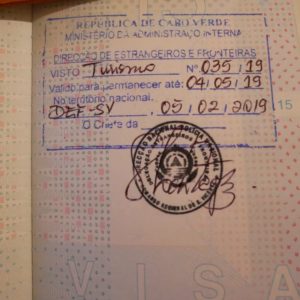
Since you’ll need to hand over your passport, travel between the islands by ferry or plane won’t be possible. So you’ll need to stick to one island for that time. You’ll need: your valid passport, a copy of your ID page of your passport and the page next to it, a copy of your entry stamp page and the page next to it, a passport photo, your return ticket, proof of accommodation, proof of sufficient funds (~€25 per day of stay), and travel insurance. The better you are prepared, the less cumbersome the process will be. The extension itself costs about €19 to be paid at a Cabo Verdean bank and not to the police directly. You can read more about our visa extension experience in São Vicente.
Safety
Cabo Verde is a safe place to visit with very few crimes happening. Some areas can feel a bit sketchy, especially after dark since many areas don’t have street lights. Make sure that you can use your phone as a flashlight if you are walking after dark.
Drivers in Cabo Verde are often driving quite fast and it’s not uncommon to cut off pedestrians when turning. Be careful when crossing roads and don’t insist on your right to priority.
The tap water in Cabo Verde is considered safe for washing dishes and brushing teeth, but not for consumption. That being said, we used tap water that has boiled for a few minutes to make coffee and didn’t have any problems over our three-month stay.
The toilet paper can usually be flushed down the toilet unless there is a sign saying otherwise.
Culture, Language, & Religion
The Cabo Verdean archipelago was uninhabited when the Portuguese discovered it in the 15th century. The Portuguese colonizers used the islands as a stopover for the Atlantic slave trade, which is why the people today are mostly of West African and Portuguese descent. Cabo Verde and what is today known as Guinea-Bissau fought together for decolonization and independence. Cabo Verdean men were drafted into the Portuguese army to fight on the colonizer’s side in the Angolan War of Independence, against their own interests. Like all the remaining Portuguese colonies in Africa, Cabo Verde became independent in 1975, one year after Guinea-Bissau. While the war wasn’t fought on the ground in Cabo Verde – saving vital infrastructure and civilian casualties – the scars of colonial times and survivors of the war in Angola are still there. One site that reminds of the cruelties is the concentration camp in Tarrafal on Santiago island.
Lots of Cabo Verdeans have emigrated from the islands over the decades, which has left a significant impact on the country and plays a common theme in the musical genre morna. Most people have one or multiple family members living or working abroad. Some return from work abroad with enough money to start a guest house or retire comfortably. There are also many citizens of other countries of Cabo Verdean descent who make a trip back to their island of origin. There’s also a lot of migration between the islands, mostly based on the availability of work. On the popular tourist island Sal, you’ll find Cabo Verdeans of every other island working as taxi drivers, guest house and restaurant owners.
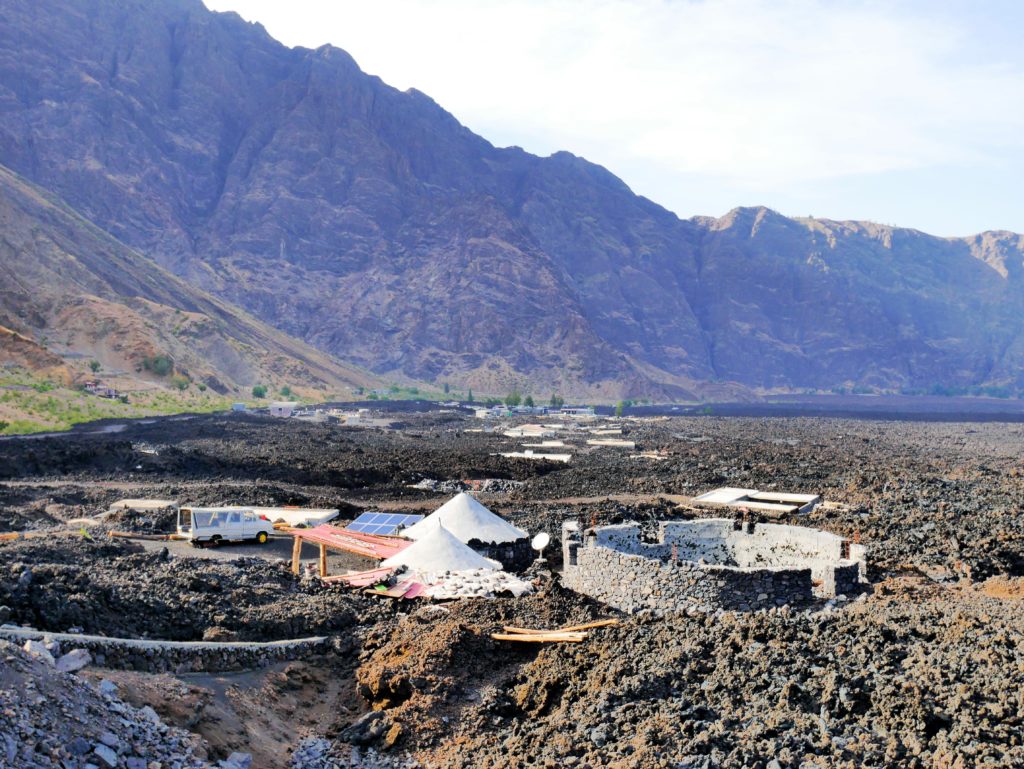
Cabo Verdeans speak Kriol, or Cabo Verdean Creole, which is a mix of Portuguese and West African words. The official language of Cabo Verde is still Portuguese, but you won’t hear people speaking it. Perhaps the government will raise the status of Kriol in the coming years. There are regional dialects, mostly based along the Barlavento/Sotavento division of the islands. Cabo Verdeans are very proud of their language and will be enthusiastic to teach you a few words or phrases. ‘Bom dia’ (Good day) becomes ‘Bon dia’, and ‘Tudo bem?’ (How are you?) becomes ‘Tudu dretu?’. Knowing at least these will help you leave a positive impression.
Due to a large influx of French tourists, many Cabo Verdeans know some French. If you’re white, people will often assume you’re French until proven otherwise. This is especially the case on the islands of Santo Antão, São Nicolau, Fogo, and Brava. Those working in tourism also often speak English. If you say you speak Spanish, Cabo Verdeans will consider it easy to communicate with you without any party changing their language. Communicating in Portuguese from Portugal or Brazil will also work, but you might encounter small (yet crucial) differences between the use of words.
As most communities are rather small, greeting one another on the streets is very normal. You’ll most likely be invited to nod or wish people a good day or afternoon with anyone you make eye contact with. Depending on your own background, this might take some getting used to but is highly appreciated by locals.
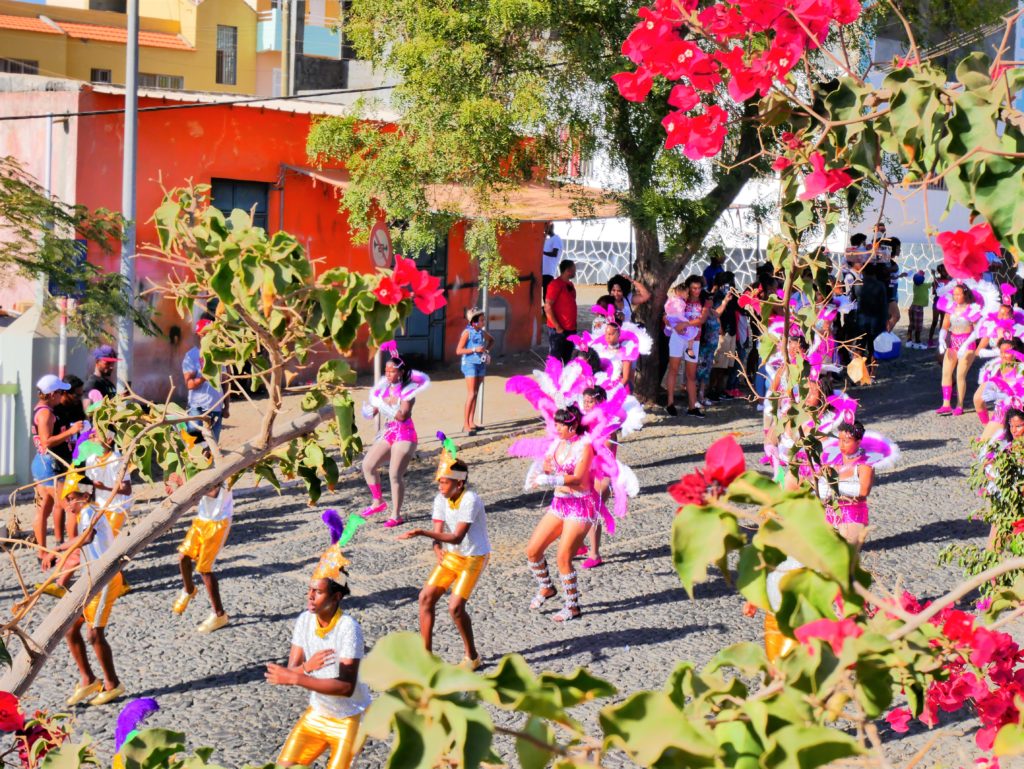
Most Cabo Verdeans are Christian, particularly Catholic. On Sundays, many people will spend their time worshipping in church, which means it’s difficult to buy food or get transport. It’s best to not travel on Sundays or do anything of major importance, which is why it’s a good idea to always make Sunday a working day for your remote job. Cabo Verdeans most likely won’t ask intrusive questions about your own religion.
Final Words
We hope that this guide is useful in your pursuit of discovering the sometimes challenging but incredibly rewarding archipelago of Cabo Verde. Let us know what your experiences were and how you liked the country.
If you are still unsure about Cabo Verde, check out the video of our time there:
If you want to stay informed when we publish new guides to amazing destinations, sign up for our little newsletter. We don’t send more than one email per month.